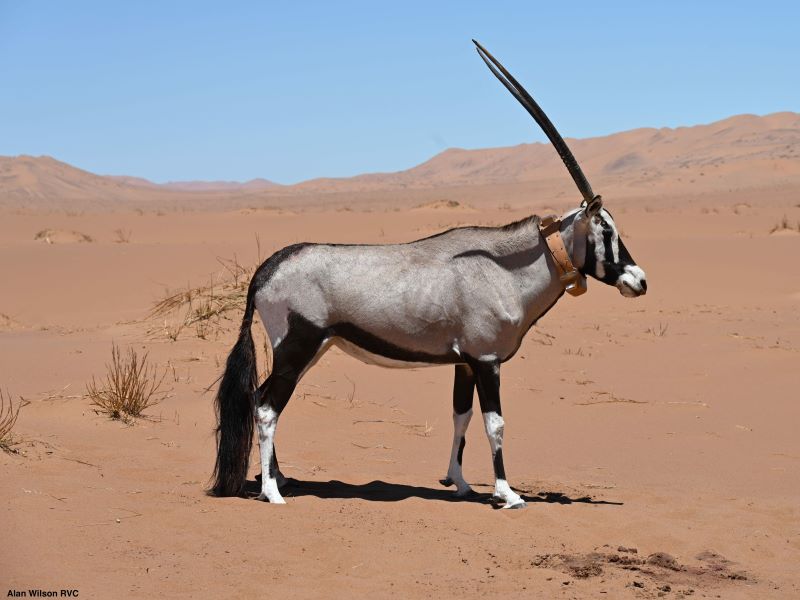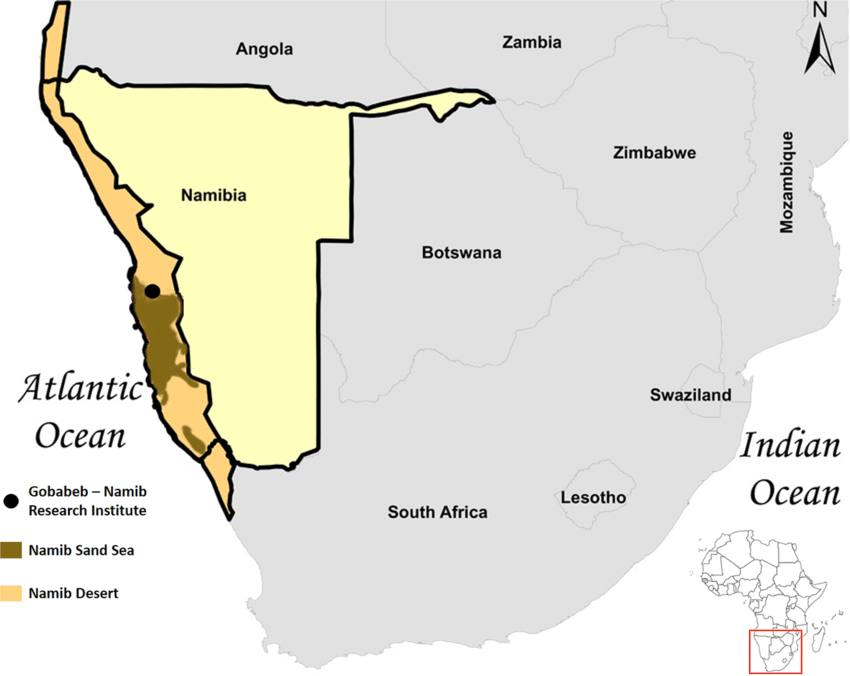
Gemsbok of the Namib Sand Sea
The gemsbok of the Namib Sand Sea in Namibia live deep in the complex maze of sand dunes and navigate between isolated patches of succulent vegetation, rarely drinking water. The specialisations to live here are extremely complex and we want to understand what is important in the anatomy, physiology and behaviour of gemsbok that enable them to survive in and exploit their extreme ecological niche.

Challenge
We are studying gemsbok living deep in the dunes of the 30,000 km2 Namib Sand Sea in Namibia. Gemsbok are fascinating from a navigational and physiology perspective: they can survive without drinking, living deep in the complex maze of sand dunes and navigating between isolated patches of succulent vegetation. The specialisations to live here are much more complex than in the large African predators we have previously studied, which simply need to out-run or out-manoeuvre their prey to survive. We want to understand what is important in the anatomy, physiology and behaviour of gemsbok that enable them to survive in and exploit their extreme ecological niche.
Solution
This research will involve fitting wild, free-ranging desert gemsbok with tracking and sensing collars of our own design and construction, the latest evolution of our wildlife collars as used over many years in our previous research. These collars contain GNSS receivers for animal location, plus a suite of sensors specific to this research – accelerometers, gyroscopes, magnetometer, and a light sensor. The collars are fitted by a Namibian wildlife vet and do not affect the animal’s health or behaviour. The collars are highly configurable remotely – over 75 different configuration parameters can be set to control the operation of the collars – and they include solar cells for battery charging together with sophisticated power management and battery switching. We have included satellite modems in the collars, we can transfer data back to the lab and we can evaluate and tune collar settings to those most appropriate for the environment and experiments. Much of the data from the collars can be retrieved without human contact with the animal, via satellite transfer, download to our research aircraft and the remainder will be retrieved when the collars are recovered at the end of the data collection period.

Partners
Gobabeb Namib Research Institute: https://www.gobabeb.org
Iridium Satellite Communications Iridium.com
